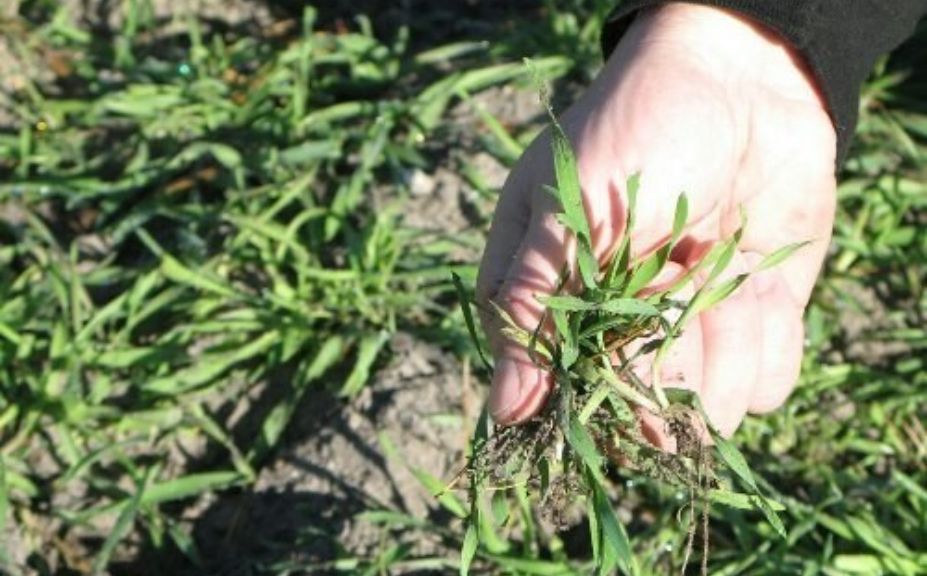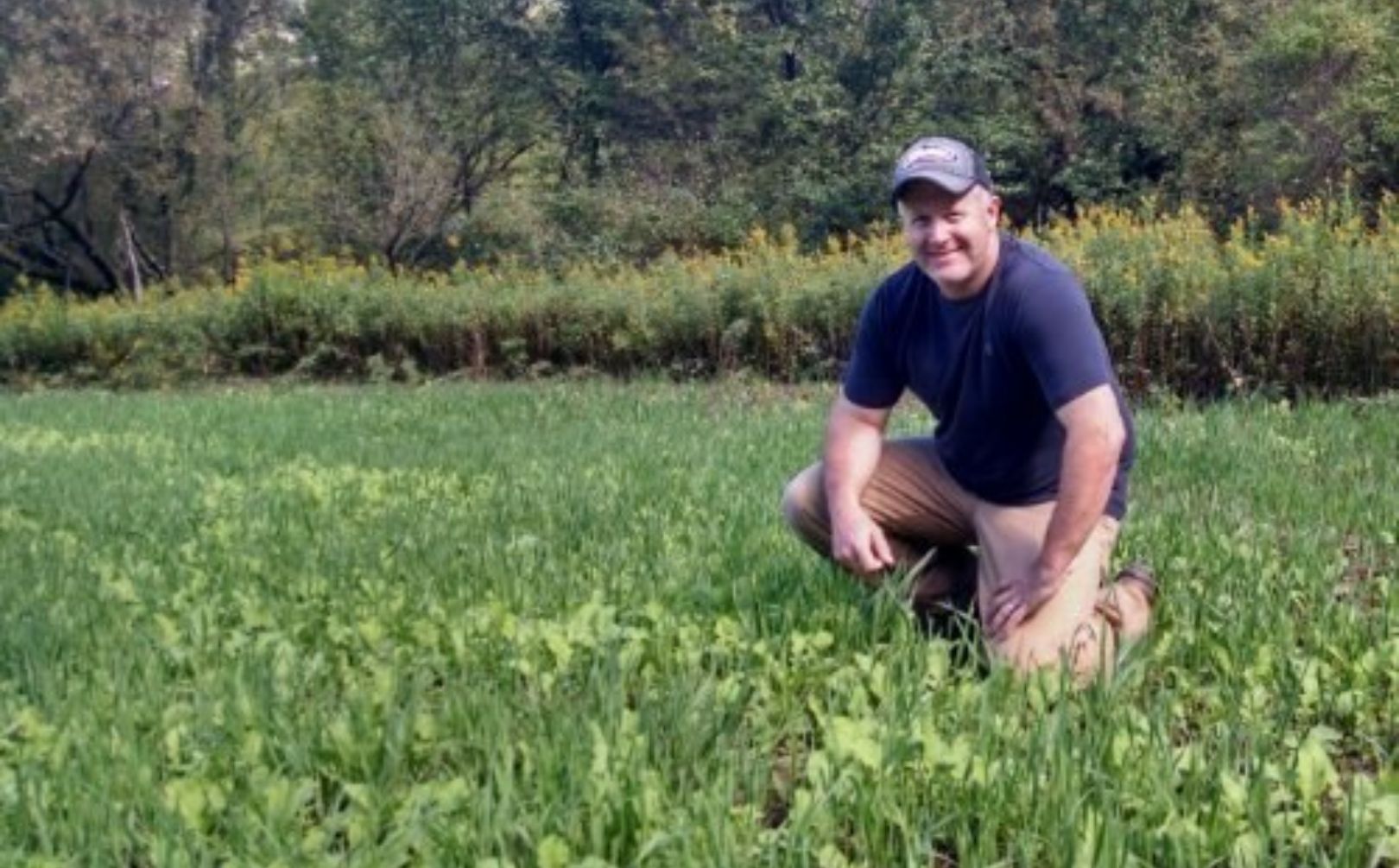Winter wheat and winter rye are popular forage choices for deer. Both have unique benefits and challenges.
Deciding between winter wheat and winter rye can seem tricky. Each has specific features that appeal to deer, and understanding these can help you make the right choice. Winter wheat offers high nutrition, while winter rye is hardy and grows fast.
Knowing which one suits your needs will benefit both you and the wildlife. In this blog, we will compare winter wheat and winter rye, focusing on their benefits for deer. This comparison aims to help you choose the best option for your food plot, ensuring healthy and happy deer throughout the colder months. Stay tuned to make an informed decision for your land and the deer population.

Credit: m.youtube.com
Winter Wheat Basics
Winter wheat is a popular choice for deer food plots. It provides valuable forage during the colder months. Understanding its basics helps land managers make informed decisions.
Growth Characteristics
Winter wheat has a strong growth rate. It germinates quickly in cool temperatures. This makes it ideal for planting in late fall. The plant’s root system is deep and robust. It helps in soil stabilization. Winter wheat can grow in various soil types. It tolerates both wet and dry conditions well.
Deer benefit from its lush, green growth. The plant remains green throughout the winter. It also provides cover and bedding for deer.
Nutritional Value For Deer
Winter wheat is high in nutritional value. It offers protein and energy for deer. The forage is palatable and digestible. Deer consume it readily.
The plant’s green leaves are rich in vitamins and minerals. These nutrients support deer health. Winter wheat also helps deer maintain body condition during winter.
Overall, it is a reliable food source for deer. It ensures they thrive through the cold months.

Credit: www.whitetailhabitatsolutions.com
Winter Rye Basics
Winter rye is a cool-season grass that thrives in colder climates. It is a popular choice for deer food plots due to its adaptability and resilience. It provides excellent forage during the winter months when other food sources are scarce. Below, we will explore the growth characteristics and nutritional value of winter rye for deer.
Growth Characteristics
Winter rye grows quickly and can germinate in temperatures as low as 34°F. This makes it ideal for late-season planting. It has a robust root system that helps prevent soil erosion and improves soil structure. Winter rye can grow in a variety of soil types, from sandy to clay, and it tolerates poor soil conditions well. It reaches a height of 3 to 5 feet.
| Characteristic | Description |
|---|---|
| Germination Temperature | 34°F |
| Soil Type | Sandy to Clay |
| Height | 3 to 5 feet |
Nutritional Value For Deer
Winter rye is highly palatable to deer, providing essential nutrients during the winter. It is rich in carbohydrates and proteins, which are vital for deer health and antler growth. Its high fiber content aids in digestion, ensuring deer remain healthy.
Deer can benefit from the consistent availability of winter rye, as it remains green and nutritious even under snow cover. This makes it an excellent choice for maintaining healthy deer populations throughout the winter.
- High in carbohydrates
- Rich in protein
- High fiber content
- Stays green under snow
Comparing Growth Conditions
Choosing between winter wheat and winter rye for deer can be challenging. Both crops offer benefits. Understanding their growth conditions helps make an informed decision. This section compares their soil requirements and climate suitability.
Soil Requirements
Winter wheat thrives in well-drained, fertile soils. Sandy loam or clay loam works best. It prefers a pH level between 6.0 and 7.0. Regular soil testing helps maintain optimal conditions. Winter rye, on the other hand, is less picky. It grows well in various soil types. From sandy to clay soils. It tolerates poor soil conditions better than winter wheat. Rye is more forgiving, making it suitable for less fertile lands.
Climate Suitability
Winter wheat needs a temperate climate. It requires a cold period for proper development. This cold period is known as vernalization. It grows well in regions with mild winters and cool springs. Winter rye is more adaptable. It withstands harsher climates better. It grows in colder and wetter conditions. This makes rye a good choice for harsher winter climates.
Deer Preference
Understanding what deer prefer to eat can help in planning your food plots. Two popular choices are winter wheat and winter rye. Both are cool-season cereals, but which one do deer prefer?
Feeding Habits
Deer have unique feeding habits. They prefer tender shoots and lush greens. Winter wheat and winter rye both offer this. But, there are differences.
Winter wheat tends to stay greener longer. This can attract deer for a longer period. Deer love its palatable and tender shoots, especially during late fall and early winter.
Winter rye grows quickly and is resilient. Deer are drawn to its rapid growth. It’s a favorite in colder climates because it remains green even in harsh conditions.
Nutritional Benefits
The nutritional value of what deer eat is crucial. Let’s compare winter wheat and winter rye.
| Nutrient | Winter Wheat | Winter Rye |
|---|---|---|
| Protein Content | 12-15% | 10-12% |
| Fiber | Moderate | High |
| Energy | High | Moderate |
Winter wheat has slightly higher protein content. This is vital for deer health and antler growth. It also provides more energy, which is essential during colder months.
Winter rye offers high fiber. This aids in digestion. It’s especially useful in late winter when other food sources are scarce.
Planting And Maintenance
Planting and maintaining winter wheat and winter rye for deer involves understanding the optimal planting times and the necessary maintenance practices. These crops provide essential nutrition for deer during the colder months. Proper planning can ensure a successful food plot that attracts and sustains deer populations.
Optimal Planting Times
Winter wheat and winter rye should be planted at specific times to ensure good growth. The best time to plant winter wheat is in the early fall. This allows the plants to establish roots before the first frost. Generally, this means planting in late September to early October.
Winter rye, on the other hand, can be planted a bit later. It is more cold-tolerant than winter wheat. Plant winter rye from mid-October to mid-November. This flexibility makes winter rye a good choice for areas with unpredictable fall weather.
Maintenance Practices
Maintaining winter wheat and winter rye plots involves several key practices. These practices ensure the crops remain healthy and attractive to deer.
- Soil Testing: Test the soil before planting. This helps determine if any amendments are needed.
- Fertilization: Apply a balanced fertilizer based on soil test results. This boosts growth and ensures the plants have the nutrients they need.
- Weed Control: Monitor for weeds and remove them promptly. Weeds compete with your crops for nutrients and light.
- Watering: Ensure the plots receive adequate water, especially during dry spells. Proper watering is crucial for seed germination and growth.
- Monitoring: Regularly check the plots for signs of disease or pest damage. Address any issues quickly to prevent crop loss.
By following these planting and maintenance guidelines, you can create a thriving food plot for deer. Both winter wheat and winter rye can provide excellent forage, helping to support healthy deer populations through the winter months.

Credit: www.whitetailhabitatsolutions.com
Cost Considerations
When deciding between winter wheat and winter rye for attracting deer, cost is a key factor. This section will break down the important aspects of cost considerations.
Seed Prices
The first step in understanding costs is examining seed prices. Seed prices can differ significantly between winter wheat and winter rye. Generally, winter wheat seeds are less expensive. On average, you might pay around $12-$15 per 50-pound bag for winter wheat seeds. Winter rye seeds, on the other hand, can cost $18-$22 per 50-pound bag.
| Seed Type | Price per 50-pound Bag |
|---|---|
| Winter Wheat | $12-$15 |
| Winter Rye | $18-$22 |
Overall Investment
The overall investment includes more than just seed prices. Consider other factors like soil preparation, fertilizer, and maintenance. Winter wheat typically requires less fertilizer and soil preparation. This can make it a more cost-effective option.
- Fertilizer Costs: Winter rye usually needs more fertilizer.
- Soil Preparation: Winter wheat often needs less soil work.
- Maintenance: Both crops need basic care, but rye may need more.
Here is a simple cost comparison:
| Cost Factor | Winter Wheat | Winter Rye |
|---|---|---|
| Seed Price | $12-$15 | $18-$22 |
| Fertilizer | Low | High |
| Soil Prep | Low | Medium |
| Maintenance | Basic | Basic to High |
Based on these factors, winter wheat often proves to be more cost-efficient for those on a budget.
Frequently Asked Questions
What Is The Best Time To Plant Winter Wheat For Deer?
Plant winter wheat in early fall. This gives it time to establish before winter.
How Does Winter Rye Benefit Deer?
Winter rye grows quickly and provides food during cold months. It also stays green longer.
Can Deer Eat Both Winter Wheat And Winter Rye?
Yes, deer eat both. They provide essential nutrients and are easy for deer to digest.
Which Grows Faster, Winter Wheat Or Winter Rye?
Winter rye grows faster. It quickly covers the ground and provides early food for deer.
Is Winter Rye Or Winter Wheat More Drought-tolerant?
Winter rye is more drought-tolerant. It survives better in dry conditions compared to winter wheat.
Conclusion
Choosing between winter wheat and winter rye for deer depends on your needs. Winter wheat offers good nutrition and attracts deer well. Winter rye is hardy and grows in poor soil. Both options provide benefits for deer plots. Evaluate your soil type and growth conditions.
Then, decide which fits your situation best. Either choice can enhance your deer habitat. Happy planting and good luck with your deer management!